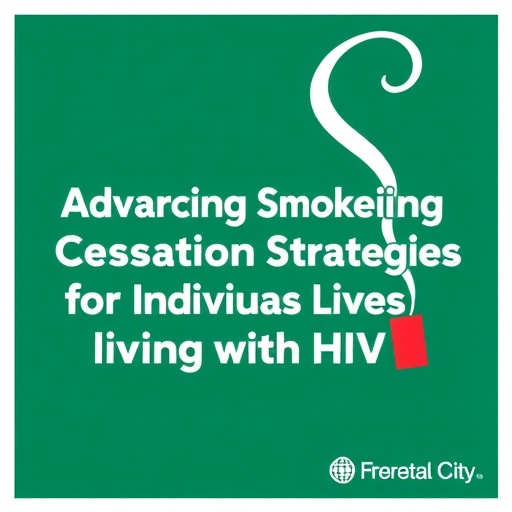In an eye-opening revelation that may reshape our understanding of environmental toxins and cancer biology, a new study uncovers a significant link between lead accumulation in breast cancer tissues and heightened DNA instability, accompanied by an enhanced resistance to programmed cell death mechanisms. This pioneering research, conducted by Scimeca et al. and published in Cell Death Discovery, delves into the intricate biological interactions between heavy metal bioaccumulation and the cellular dynamics that fuel cancer progression.
Lead, a pervasive heavy metal known for its environmental and occupational toxicity, has long been scrutinized for its detrimental health effects. Yet, its direct relationship with cancer tissue behavior has remained elusive until now. The study in question meticulously quantifies lead content within human breast cancer samples, correlating these concentrations with markers indicative of genomic instability and survival pathways. Their findings illuminate a previously uncharted dimension where environmental exposure transcends passive accumulation to actively influence disease resilience and progression.
Central to the study’s revelations is the concept of DNA instability—a hallmark of cancer genesis and malignancy—that becomes exacerbated in the presence of elevated lead levels. Lead ions, by their chemical nature, have the potential to disrupt DNA repair mechanisms, induce oxidative stress, and generate mutations. The researchers demonstrate that breast cancer tissues laden with higher quantities of lead exhibit pronounced genomic aberrations, which likely contribute to the tumor’s adaptability and aggressiveness. This insight advances our comprehension of how environmental factors may synergistically interact with genetic vulnerabilities in oncogenesis.
.adsslot_YpSF1nZzDg{ width:728px !important; height:90px !important; }
@media (max-width:1199px) { .adsslot_YpSF1nZzDg{ width:468px !important; height:60px !important; } }
@media (max-width:767px) { .adsslot_YpSF1nZzDg{ width:320px !important; height:50px !important; } }
ADVERTISEMENT
Remarkably, the study further investigates how these lead-enriched cancer cells exhibit an uncanny resistance to cell death, particularly to apoptosis, the programmed dismantling vital for controlling aberrant cell growth. Resistance to apoptosis is a notorious trait in cancerous cells, allowing tumors not only to survive hostile microenvironments but also to evade therapeutic interventions. The authors provide evidence suggesting that lead may modulate signaling pathways involved in cell death, thereby fortifying tumor cells against internal and external apoptotic cues. This discovery deepens the biological narrative linking heavy-metal toxicity to cancer treatment resistance.
Methodologically, the research employs a sophisticated blend of analytical chemistry and molecular biology techniques to achieve its comprehensive analysis. Utilizing advanced mass spectrometry, the authors precisely measure lead content within tumor specimens. Concurrently, assays evaluating DNA damage markers and apoptotic proteins enable a nuanced understanding of the cellular consequences induced by lead. This interdisciplinary approach underscores the complexity and rigor demanded to unveil subtle bioaccumulative dynamics within human tissues.
The implications of this study ripple beyond academic curiosity. Establishing lead as not only a passive contaminant but an active participant in tumor biology provokes urgent questions about environmental exposures and public health policies. Breast cancer, a disease already influenced by a myriad of genetic and lifestyle factors, may harbor an underappreciated environmental dimension that demands new preventative and therapeutic strategies. This work championed by Scimeca and colleagues could catalyze a paradigm shift in cancer risk assessment frameworks.
Moreover, the findings serve as a clarion call for integrating environmental toxicology into oncology. The interdependence of heavy metal exposure and the molecular underpinnings of cancer highlights a complex interface where contamination translates into biological advantage for tumor cells. Therapeutic research could benefit from these insights by exploring chelating agents or metal-binding drugs as adjuncts to current breast cancer treatments, potentially counteracting the survival benefits conferred by lead bioaccumulation.
In terms of cellular mechanism, the study shines a light on oxidative stress as a pivotal mediator. Lead’s propensity to generate reactive oxygen species (ROS) likely exacerbates DNA strand breaks and impairs repair pathways, creating a mutagenic environment within cancer cells. Intriguingly, tumor cells may exploit this oxidative milieu to drive genetic diversity, promoting adaptability and the emergence of therapy-resistant clones. This biological interplay invites further exploration into antioxidant strategies tailored for cancer management.
Another provocative aspect concerns the tumor microenvironment. Lead accumulation might influence not just the cancer cells but also surrounding stromal and immune components. Disrupted cell death pathways could shift the inflammatory landscape, impacting immune surveillance and fostering an immunosuppressive niche that favors tumor survival. While this dimension remains to be fully elucidated, the present study lays foundational groundwork for such future inquiries.
The broader environmental context cannot be overlooked. Despite global regulations curbing lead usage, residual contamination persists in many regions, through soil, water, and air particulates. The bioaccumulation noted in breast cancer tissues highlights the long-term consequences of industrial pollution and occupational hazards. This realization underscores the need for continued environmental vigilance and targeted remediation efforts to minimize human exposure and subsequent health risks.
In summary, the compelling association drawn between lead bioaccumulation and breast cancer tissue pathophysiology by Scimeca et al. transforms our perspective on heavy metals’ role in oncogenesis. Their rigorous investigative approach reveals that lead not only destabilizes genetic material but also arms malignant cells with enhanced survival capabilities, complicating treatment landscapes. This study beckons the scientific community to reconceptualize cancer through an environmental lens, integrating toxicology with cellular and molecular oncology.
Going forward, the research opens novel avenues for diagnostic and prognostic development. Measuring lead content in tumor biopsies may serve as a biomarker for disease aggressiveness or treatment responsiveness, enabling personalized medicine approaches. Further, understanding the molecular pathways disturbed by lead can guide the design of innovative therapeutics aimed at restoring genomic integrity and apoptotic sensitivity in affected tumors.
This groundbreaking work exemplifies the critical importance of multidisciplinary investigation at the intersection of environmental science and cancer biology. By linking a common yet insidious pollutant with fundamental cancer characteristics, it highlights hidden dimensions of tumor ecology that may prove pivotal in future cancer control efforts. The study, richly detailed and methodologically robust, sets a benchmark for ensuing endeavors probing the toxicological influences on human malignancies.
As research progresses, it remains imperative to decipher the precise molecular circuits through which lead modulates DNA repair and cell death. Detailed mapping of these pathways could unearth targets for drug development and preventative interventions. Additionally, epidemiological studies correlating environmental lead exposure with breast cancer incidence and outcomes will be crucial to contextualize these molecular findings within population health frameworks.
Ultimately, the study challenges prevailing notions about environmental toxins as passive contaminants in cancer. Instead, it presents lead as an active biochemical agent capable of reshaping tumor biology to foster genomic chaos and therapeutic resistance. This novel perspective invites an integrative approach to cancer research and treatment, one that transcends genetic mutations alone and embraces the complex environmental interactions shaping disease trajectories.
Subject of Research: Lead bioaccumulation impacts on human breast cancer tissue, focusing on DNA instability and resistance to cell death.
Article Title: Lead bioaccumulation in human breast cancer tissue is associated with DNA instability and cell death resistance.
Article References:
Scimeca, M., Giacobbi, E., Bonfiglio, R. et al. Lead bioaccumulation in human breast cancer tissue is associated with DNA instability and cell death resistance. Cell Death Discov. 11, 383 (2025). https://doi.org/10.1038/s41420-025-02676-6
Image Credits: AI Generated
DOI: https://doi.org/10.1038/s41420-025-02676-6
Tags: breast cancer research advancementscancer resilience factorsDNA instability in cancerenvironmental impacts on cancer developmentenvironmental toxins and cancer biologygenomic instability and cancer progressionheavy metal bioaccumulation and healthlead accumulation in human tissueslead exposure and breast canceroxidative stress and cancer riskprogrammed cell death mechanismsScimeca et al. study findings





